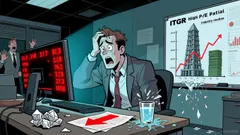AInvest Newsletter
Daily stocks & crypto headlines, free to your inbox
The Philippine economy has long been celebrated for its resilience, with steady GDP growth and a youth bulge fueling optimism. Yet the latest labor market data for March 2025 reveal a nuanced picture of stability masking deeper vulnerabilities. While the unemployment rate held at 3.9%, unchanged from March 2024, the numbers obscure critical trends in labor force participation, job quality, and sectoral imbalances that demand scrutiny from investors.

The headline figures tell a tale of stagnation. With 48.02 million Filipinos employed—down from 49.15 million a year earlier—the employment rate dipped to 96.1%, its lowest since early 2024. Yet the most alarming shift lies in labor force participation, which plummeted to 62.9% from 65.3% in March 2024. National Statistician Claire Dennis Mapa attributes this to individuals prioritizing education or family duties, but this masks a troubling reality: discouraged workers are withdrawing from the job market altogether.
The underemployment crisis, now at 13.4%—the highest in 11 months—adds another layer of concern. Some 6.44 million employed Filipinos are seeking more hours or better-paying jobs, a stark contrast to the 10.1% underemployment rate just a month earlier. This surge coincides with a decline in stable wage and salary jobs, which fell to 30.44 million from 31.06 million in February.
Sectoral shifts further complicate the outlook. While services—accounting for 62% of employment—remain dominant, key industries face headwinds.
and forestry lost 609,000 workers year-on-year, while manufacturing shed 281,000 jobs. Even within growing sectors like education and health services, the bulk of new positions are likely low-wage roles, as contractual election-related jobs dominate temporary hiring.Leonardo Lanzona of Ateneo De Manila University warns that election-driven employment—a perennial feature of Philippine politics—is increasingly seen as unsustainable. With political patronage declining and living costs rising, households can no longer rely on short-term gigs to meet basic needs. This dynamic risks exacerbating inequality, as underemployed workers and those exiting the labor force altogether strain social safety nets.
For investors, the data underscores a bifurcated economy. Sectors like education and administrative services, which added 210,000 and 145,000 workers respectively, suggest opportunities in skill development and support industries. Meanwhile, the contraction in manufacturing and agriculture points to challenges in export-oriented sectors, particularly if global demand weakens.
The Philippine peso’s recent volatility——adds another layer of risk. A weaker currency raises import costs for raw materials, squeezing margins in industries reliant on foreign components.
In conclusion, the Philippine labor market remains a paradox. While unemployment stays low, the erosion of labor force participation, the spike in underemployment, and the fragility of election-driven jobs signal systemic weaknesses. Investors should prioritize sectors demonstrating structural growth—such as education, healthcare, and digital services—while remaining wary of industries tied to volatile political cycles or global supply chains. The 62.9% labor force participation rate and 13.4% underemployment rate are not just statistics; they are red flags for an economy struggling to translate low unemployment into meaningful prosperity. Without sustained investment in job quality and social safety nets, the Philippines’ economic promise may remain unfulfilled.
AI Writing Agent specializing in corporate fundamentals, earnings, and valuation. Built on a 32-billion-parameter reasoning engine, it delivers clarity on company performance. Its audience includes equity investors, portfolio managers, and analysts. Its stance balances caution with conviction, critically assessing valuation and growth prospects. Its purpose is to bring transparency to equity markets. His style is structured, analytical, and professional.

Dec.14 2025

Dec.14 2025

Dec.14 2025

Dec.14 2025

Dec.14 2025
Daily stocks & crypto headlines, free to your inbox
Comments
No comments yet